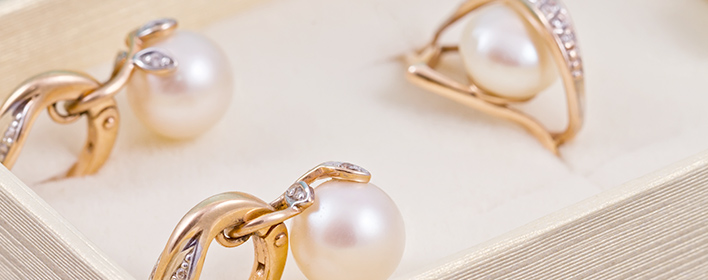
Cleaning Gold Jewelry
We all know that special feeling we get when we put on a new piece of gold jewelry.
The new ring, necklace or bracelet is shiny and all of our friends and coworkers notice how beautiful it is.
But over time, under normal, everyday wearing conditions, gold can start to look a little dull and lifeless. Cleaning your gold jewelry regularly or in-between visits to your jeweler will perk it right up, enhance its longevity and protect its value.
Inspect and Know the Jewelry You’re about to Clean
Before cleaning your jewelry, especially if it has any gemstones, inspect the prongs holding the gems in place. Also, look to see if you can see any physical signs of damage. If you see anything out of place, it’s best to bring it to the jeweler.
There are many gems that can be cleaned carefully at home, but some should only be cleaned by a professional jeweler. When you purchase a piece of jewelry with gems, ask the representative if you can clean your piece at home if need be.
Be careful with light and heat
Just as the sun’s harmful rays can damage our skin, light and heat can affect a colored gemstone’s durability and color. Over time, and in excess, they can also fade or damage some gemstones, such as amethyst, kunzite, topaz, and shell cameos. Pearls and other delicate materials, such as ivory, will bleach under extreme exposure to light. Other gems, especially amber, can darken over time when exposed to too much light.
The safest cleaning methods are also the easiest
Most colored gems can be cleaned with warm water, mild dish soap (no detergents), and a soft brush. A pulsed-water dental cleaning appliance and a soft, lint-free cloth can also be used. Be sure to rinse your jewelry in a glass of water to remove cleaning solutions since you risk losing loose stones – or even an entire piece of jewelry – if you rinse directly in the sink.
Soft gems, such as pearls, on the other hand, can easily scratch. Use a new, clean makeup brush and warm, soapy water to softly clean them. Lay a strand of pearls on a towel to dry. The wet silk thread can stretch − and attract dirt − so don’t touch your strand until it is completely dry. Pearls worn often should be restrung once a year.
Safely store your jewelry
Proper jewelry storage is often overlooked. Jewelry should never be tossed into a drawer or on top of a dresser − that’s asking for scratches and damaged gems.
Most jewelry pieces come in a box or pouch from the store, which is a perfect place to keep them. Sterling silver, for example, should be kept in an anti-tarnish bag or cloth. Jewelry boxes that feature individually padded slots for rings and posts for hanging necklaces and bracelets are also ideal.
Pearls and opals draw moisture from the air, so storing your opal or pearl jewelry in a dry area, such as a safe deposit box, can sometimes do more harm than good.
When traveling, protect your jewelry pieces from scratches or other impact damage by padding them in a separate box or case.
Many jewelry stores offer free check-up or professional cleaning at scheduled intervals: Jewelry should be checked every six months and cleaned frequently. Look for a jeweler with professional training and a good reputation – asking friends or relatives for recommendations is a good place to start.
